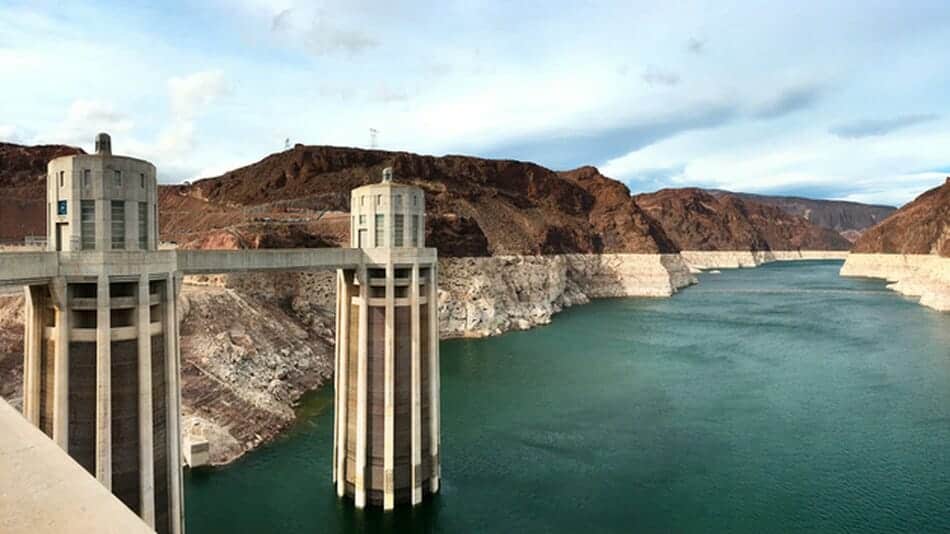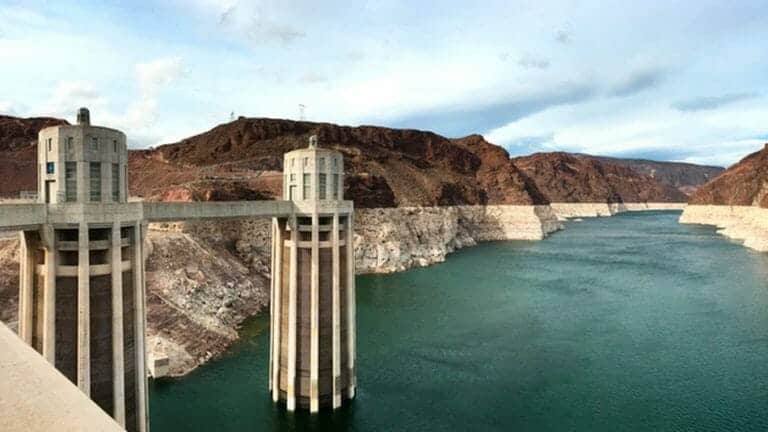Colorado River water held back by the Hoover Dam. IMAGE: SHUTTERSTOCK / ROCKET PHOTOS – HQ STOCK
An hour’s drive from Las Vegas stands America’s Hoover Dam, a commanding barrier of concrete holding back the trillions of gallons of Colorado River water held inside Lake Mead.
The dam is a proud place, built by thousands of hands and with 5 million barrels of concrete. Its golden elevator doors, Gotham-esque pillars, and stoic guardian angel statues line the lofty walkways atop the structure. A U.S. flag beating patriotically over the desert gets swapped out every few days, and then put out for sale in the visitor center.
Yet, in the 80 years since the great dam’s completion, the 1,450-mile Colorado River – which sustains some 40 million Americans in places like Phoenix, Las Vegas, and Los Angeles — has been gradually growing weaker, and the water level beyond the noble dam has fallen considerably over the last two decades. The writing is easily spotted on the steep rocky walls of the Lake Mead reservoir, where a bathtub-like ring shows where the water once sat during more fruitful times.
Today, however, the water sits 150-feet below that line, and human-caused climate change is a major reason why.
Over the last century, the river’s flow has declined by around 16 percent, even as annual precipitation slightly increased in the Upper Colorado River Basin — a vast region stretching from Wyoming to New Mexico.
New research published in the journal Water Resources Research argues that over half of this decline is due to sustained and rising temperatures in the region, which ultimately means more water is evaporated from the river, diminishing the flow.
But it’s really been in the last twenty years that matters have deteriorated into a major drought, edging the region toward a potential water-rationing crisis.
It’s the worst drought in Colorado River history.
“The river since 2000 has been in an unprecedented decline,” Brad Udall, coauthor of the new study and senior water and climate research scientist at Colorado State University, said in an interview.
“There’s no analog, from when humans started […]
Full article: The Colorado River is evaporating, and climate change is largely to blame
More about the Colorado River:
U.S.A. and Mexico agree to share a shrinking Colorado River
Colorado River v. State of Colorado
SCOTUS: Upstream States to Reduce River Usage, Aid Downstream States in Drought
Water under Colorado’s Eastern Plains running dry as farmers keep irrigating “great American desert”



